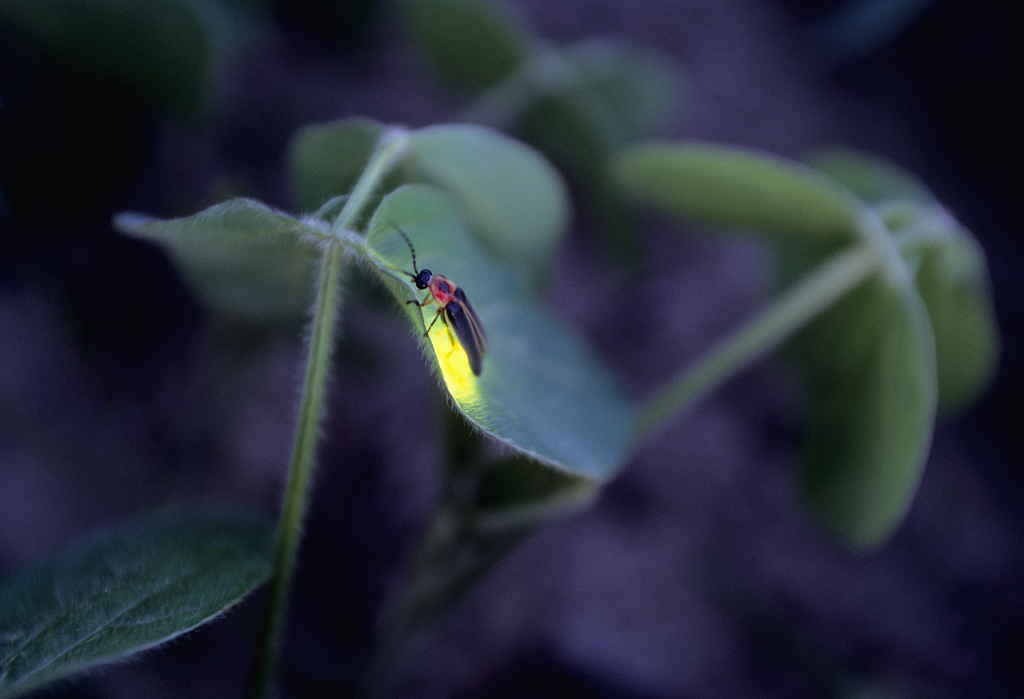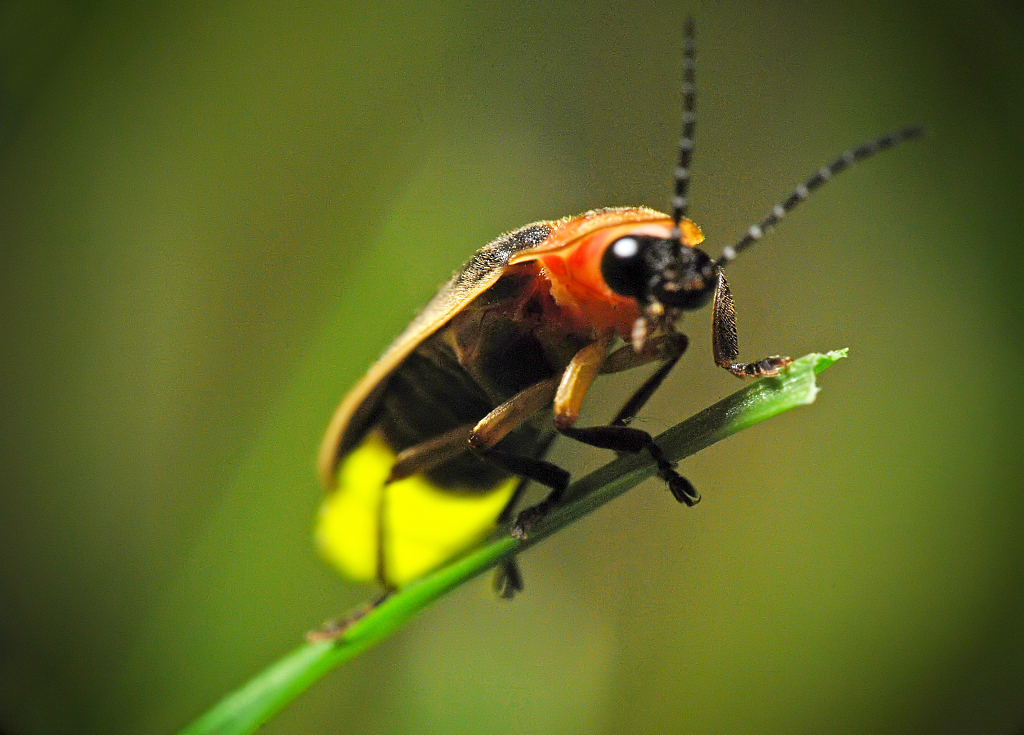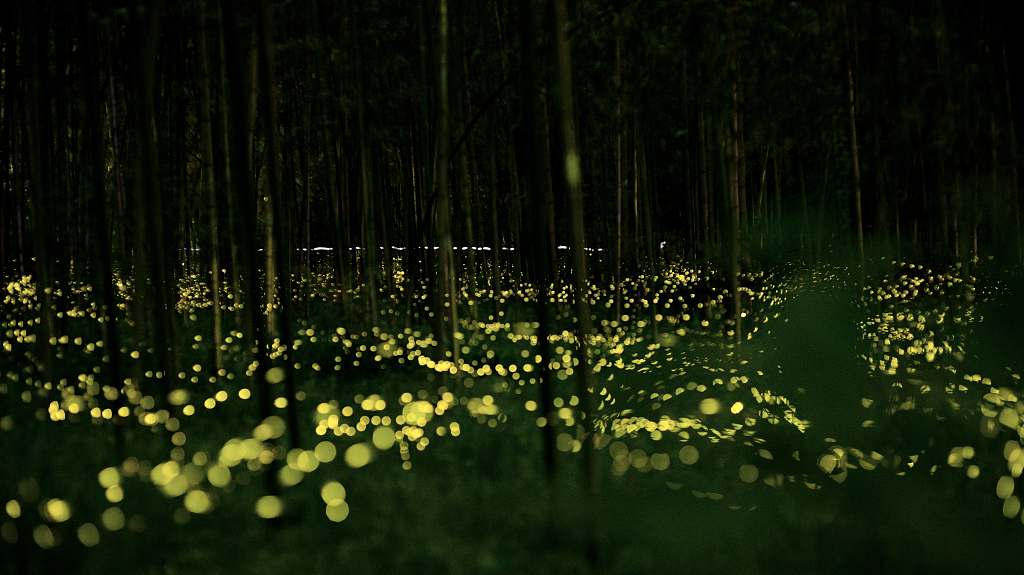Fireflies are in deep trouble, with many species facing extinction due to habitat loss and exposure to pesticides, according to the first major review of their global status, published on February 3.
Adding irony to injury, one of nature's most entrancing spectacles is also being snuffed out by artificial light pollution, researchers reported in the journal BioScience.

More than 2,000 species of fireflies – which are, in fact, beetles – illuminate wetlands, marshes, grasslands, forests and urban parks worldwide. /VCG Photo.
More than 2,000 species of fireflies – which are, in fact, beetles – illuminate wetlands, marshes, grasslands, forests and urban parks worldwide. /VCG Photo.
Varieties like Malaysia's synchronous fireflies and the Appalachian blue ghost, which both draw tourists, are being extinguished by humanity's ever-expanding ecological footprint.

Fireflies light up by triggering a chemical reaction – involving oxygen, calcium and an enzyme called luciferase – inside special organs in their abdomen, a process called bioluminescence. /VCG Photo
Fireflies light up by triggering a chemical reaction – involving oxygen, calcium and an enzyme called luciferase – inside special organs in their abdomen, a process called bioluminescence. /VCG Photo
The Malaysian firefly, Pteroptyx tener, lives during its larval phase in riverside mangroves, many of which have been ripped up to make way for palm oil plantations and fish farms.
The glowworm (L. noctiluca) has another problem – females are flightless, which means that they can't simply buzz off to a new location when their habitat is swallowed by a suburb, commercial crop or country road.
Adult Pteroptyx in Malaysia, meanwhile, gather for nightly courtship displays in specific trees located along mangrove rivers. Many of those trees have been cut down.

Light pollution poses another big threat to fireflies. /VCG Photo
Light pollution poses another big threat to fireflies. /VCG Photo
Habitat loss is the top threat to fireflies everywhere – except in East Asia and South America, where artificial light was seen as the biggest menace to the world's luminescent beetles.
Many species of firefly depend on their ability to light up to find and attract mates, therefore, light pollution messes up their mating rituals.
To make matters worse, that window of opportunity is very narrow: while the firefly larval phase lasts months to years, adults typically live only a few days. They are so focused on reproducing that they don't even eat.

Fireflies' otherworldly glow has been an enduring source of fascination, making firefly tourism long popular in Japan. /VCG Photo
Fireflies' otherworldly glow has been an enduring source of fascination, making firefly tourism long popular in Japan. /VCG Photo
The survey also found that fireflies are being decimated by commonly used insecticides, while firefly tourism has also taken a toll, with fragile ecosystems damaged by too much foot traffic.
The dozen authors contributing to the study are all affiliated with the Firefly Specialist Group – set up in 2018 – of the International Union for the Conservation of Nature (IUCN), which compiles the Red List of threatened species.
(If you want to contribute and have specific expertise, please contact us at nature@cgtn.com.)
Source(s): AFP